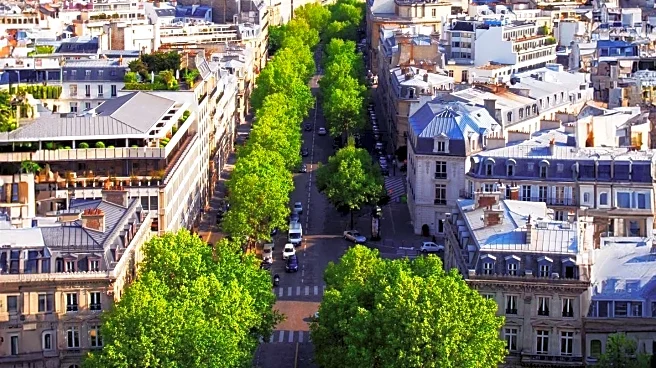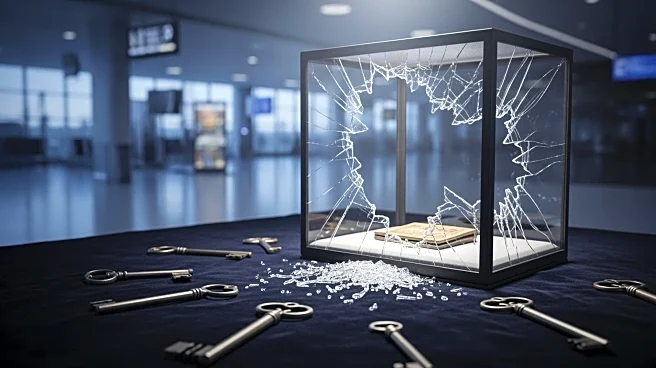What's Happening?
The city of Paris has introduced a lottery system offering burial plots in its famous cemeteries, including Père-Lachaise, Montparnasse, and Montmartre. This initiative aims to restore funerary monuments
that have fallen into disrepair. The lottery allows individuals to purchase one of 30 gravestones, each priced at €4,000, with the condition that the buyer restores the monument and gains a burial plot beside it. The cemeteries, which are nearly full, have been popular tourist destinations due to the notable figures buried there, such as Jim Morrison, Oscar Wilde, and Edith Piaf. The Paris council unanimously approved this program in April, seeking to balance the preservation of heritage sites with the need for burial space.
Why It's Important?
This initiative addresses the dual challenge of preserving historical monuments and managing limited burial space in Paris. By involving the public in the restoration process, the city not only ensures the maintenance of its cultural heritage but also provides a unique opportunity for residents to secure a burial spot in a prestigious location. This could set a precedent for other cities facing similar issues with overcrowded cemeteries and heritage conservation. The program also highlights the importance of community involvement in heritage preservation, potentially inspiring similar initiatives globally.
What's Next?
The success of this lottery could lead to further programs aimed at preserving historical sites while addressing urban space constraints. If successful, other cities might adopt similar strategies to manage their own heritage sites and burial spaces. The Paris council will likely monitor the restoration progress and public response to determine the program's effectiveness and potential expansion.
Beyond the Headlines
This initiative raises questions about the ethical considerations of commodifying burial spaces and the responsibilities of maintaining cultural heritage. It also highlights the challenges cities face in balancing modern urban needs with historical preservation. The program could influence future policies on how cities manage their historical sites and engage the public in preservation efforts.












